Showing Spotlights 105 - 112 of 154 in category All (newest first):
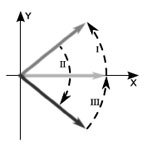 New research explores the uses of time reversal symmetry in optics, with a focus on quantum optics. The article compares time reversal with optical phase conjugation, and illustrates the concept of time reversal symmetry with several examples in classical and quantum optics. Time reversal symmetry is the physical property that events can occur in a forward or backward direction through time, with no fundamental distinction due to the direction. Time reversal symmetry applies to both classical and quantum optics, as well as areas of physics outside of optics. The property holds true in all areas of physics, with possible exceptions only under rare conditions in particle physics.
New research explores the uses of time reversal symmetry in optics, with a focus on quantum optics. The article compares time reversal with optical phase conjugation, and illustrates the concept of time reversal symmetry with several examples in classical and quantum optics. Time reversal symmetry is the physical property that events can occur in a forward or backward direction through time, with no fundamental distinction due to the direction. Time reversal symmetry applies to both classical and quantum optics, as well as areas of physics outside of optics. The property holds true in all areas of physics, with possible exceptions only under rare conditions in particle physics.
Jun 1st, 2012
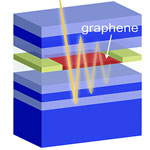 There is currently a very strong interest in using graphene for applications in optoelectronics. Graphene-based photodetectors have been realized before. By using graphene, researchers make use of the internal electric field that exists at the interface of graphene and metal. However, the low optical absorption of graphene - only 2.3 % due to its monoatomic thickness - leads to a low responsivity of these devices. Several groups worldwide are therefore currently pursuing different approaches to increase the interaction length of light with graphene and enhance the optical absorption. One novel approach is based on the integration of graphene into an optical microcavity. The increased electric field amplitude inside the cavity causes more energy to be absorbed, leading to a significant increase of the photoresponse.
There is currently a very strong interest in using graphene for applications in optoelectronics. Graphene-based photodetectors have been realized before. By using graphene, researchers make use of the internal electric field that exists at the interface of graphene and metal. However, the low optical absorption of graphene - only 2.3 % due to its monoatomic thickness - leads to a low responsivity of these devices. Several groups worldwide are therefore currently pursuing different approaches to increase the interaction length of light with graphene and enhance the optical absorption. One novel approach is based on the integration of graphene into an optical microcavity. The increased electric field amplitude inside the cavity causes more energy to be absorbed, leading to a significant increase of the photoresponse.
May 14th, 2012
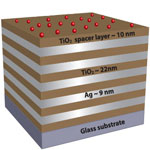 Physicists have uncovered a new method to manipulate light by borrowing an idea from the field of mathematical topology - topology is the mathematical field dealing with the properties of objects undergoing deformations, such as stretching and twisting. They created an artificial material, a "metamaterial", that can transform from regular dielectric - a substance like glass or plastic, which does not conduct electricity - to a medium that behaves like metal (reflects) in one direction and like dielectric (transmits) in the other. The research team expects optical topological transition to be the basis for a number of applications of both fundamental and technological importance through use of metamaterial-based control of light-matter interaction.
Physicists have uncovered a new method to manipulate light by borrowing an idea from the field of mathematical topology - topology is the mathematical field dealing with the properties of objects undergoing deformations, such as stretching and twisting. They created an artificial material, a "metamaterial", that can transform from regular dielectric - a substance like glass or plastic, which does not conduct electricity - to a medium that behaves like metal (reflects) in one direction and like dielectric (transmits) in the other. The research team expects optical topological transition to be the basis for a number of applications of both fundamental and technological importance through use of metamaterial-based control of light-matter interaction.
May 9th, 2012
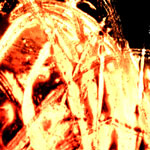 All-optical processes could allow dramatic speed increase in photonics by eliminating the need to convert photonic signals to electronic signals and back for switching. The many opportunities that all-optical processes could bring to photonics have been hampered by the lack of materials that combined photosensitivity with fast, large, and reversible changes in their optical properties at the influence of light. By exploited the universal capabilities of an 'active polymeric template' for confining, orienting, and stabilizing a wide range of self-organized materials, researchers recently have exploited a wide range of optical, electro-optical and all-optical effects which confirm the extraordinary capability of their 'active polymeric template' to induce self-organization, without using any kind of surface chemistry or functionalization.
All-optical processes could allow dramatic speed increase in photonics by eliminating the need to convert photonic signals to electronic signals and back for switching. The many opportunities that all-optical processes could bring to photonics have been hampered by the lack of materials that combined photosensitivity with fast, large, and reversible changes in their optical properties at the influence of light. By exploited the universal capabilities of an 'active polymeric template' for confining, orienting, and stabilizing a wide range of self-organized materials, researchers recently have exploited a wide range of optical, electro-optical and all-optical effects which confirm the extraordinary capability of their 'active polymeric template' to induce self-organization, without using any kind of surface chemistry or functionalization.
Apr 4th, 2012
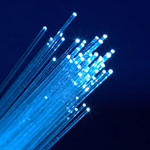 Optical fibers have revolutionized telecommunications by providing higher performance, more reliable telecommunication links with ever decreasing bandwidth cost. In parallel with these developments, fiber-optic sensor technology has been a major user of technologies associated with the optoelectronic and fiber optic communications industry. Today, with the rapid advance of communications and especially sensing applications, there is an ever increasing need for advanced performance and additional functionalities. This, however, is difficult to achieve without addressing fundamental fabrication issues related to the integration onto optical fibers of advanced functional materials at the micro- and nanoscale. Solving these technical problems will open up the possibility of developing multifunctional labs integrated onto a single optical fiber, exchanging information and combining sensorial data. This could result in auto diagnostic features as well as new photonic and electro-optic functionalities useful in many strategic sectors such as optical processing, environment, life science, safety and security.
Optical fibers have revolutionized telecommunications by providing higher performance, more reliable telecommunication links with ever decreasing bandwidth cost. In parallel with these developments, fiber-optic sensor technology has been a major user of technologies associated with the optoelectronic and fiber optic communications industry. Today, with the rapid advance of communications and especially sensing applications, there is an ever increasing need for advanced performance and additional functionalities. This, however, is difficult to achieve without addressing fundamental fabrication issues related to the integration onto optical fibers of advanced functional materials at the micro- and nanoscale. Solving these technical problems will open up the possibility of developing multifunctional labs integrated onto a single optical fiber, exchanging information and combining sensorial data. This could result in auto diagnostic features as well as new photonic and electro-optic functionalities useful in many strategic sectors such as optical processing, environment, life science, safety and security.
Mar 27th, 2012
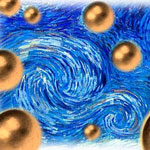 Despite offering technological innovation in biosensing and THz metamaterials design, plasmonics faces fundamental physical limitation in the visible frequency band due to high absorptive losses of metals. The major setback to practical applications of plasmonics is high radiative and/or dissipative losses of noble-metal nanostructures in the visible frequency range. Although metal nanostructures enable unrivalled high concentration of optical energy well beyond the diffraction limit, a significant part of this energy is converted into an inherently lossy kinetic motion of free electrons in metal, and is dissipated rapidly as heat. Researchers have now demonstrated a new way to efficiently trap, enhance and manipulate light in nanoscale structures and nanopatterned thin films. This novel approach can significantly improve performance of photonic and electronic devices such as nanosensors, thin-film organic solar cells and optical nanochips.
Despite offering technological innovation in biosensing and THz metamaterials design, plasmonics faces fundamental physical limitation in the visible frequency band due to high absorptive losses of metals. The major setback to practical applications of plasmonics is high radiative and/or dissipative losses of noble-metal nanostructures in the visible frequency range. Although metal nanostructures enable unrivalled high concentration of optical energy well beyond the diffraction limit, a significant part of this energy is converted into an inherently lossy kinetic motion of free electrons in metal, and is dissipated rapidly as heat. Researchers have now demonstrated a new way to efficiently trap, enhance and manipulate light in nanoscale structures and nanopatterned thin films. This novel approach can significantly improve performance of photonic and electronic devices such as nanosensors, thin-film organic solar cells and optical nanochips.
Jan 31st, 2012
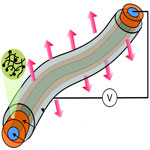 OLEDs - organic light-emitting diodes - are full of promise for a range of practical applications. OLED technology is based on the phenomenon that certain organic materials emit light when fed by an electric current and it is already used in small electronic device displays in mobile phones, MP3 players, digital cameras, and also some TV screens. OLEDs in fiber form could lead to revolutionary applications by integrating optical and optoelectronic devices into textile. Combined with nanoelectronic devices, we might one day see flexible optical sensors and display screens woven into shirts and other garments. You could literally wear your next-generation smart phone or iPad on your sleeves; including the solar panels to power them.
OLEDs - organic light-emitting diodes - are full of promise for a range of practical applications. OLED technology is based on the phenomenon that certain organic materials emit light when fed by an electric current and it is already used in small electronic device displays in mobile phones, MP3 players, digital cameras, and also some TV screens. OLEDs in fiber form could lead to revolutionary applications by integrating optical and optoelectronic devices into textile. Combined with nanoelectronic devices, we might one day see flexible optical sensors and display screens woven into shirts and other garments. You could literally wear your next-generation smart phone or iPad on your sleeves; including the solar panels to power them.
Jan 27th, 2012
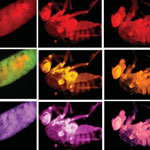 Fruit flies (Drosophila melanogaster) are the workhorses in countless biomedical research laboratories around the world. The bioimaging of live specimens, ideally through all the stages of the fruit fly life cycle, is a tricky and often complicated undertaking. Researchers in India have now developed a relatively simple way to introduce fluorescent nanomaterials into fruit flies: They prepared carbon nanoparticles from wood waste and added them to the flies' food supply. The fluorescent fruit flies showed no toxic effects - upon withdrawal of the nanoparticles from their food, they excreted the fluorescing material and continued to proliferate to the next generation, demonstrating a return to their normal lives.
Fruit flies (Drosophila melanogaster) are the workhorses in countless biomedical research laboratories around the world. The bioimaging of live specimens, ideally through all the stages of the fruit fly life cycle, is a tricky and often complicated undertaking. Researchers in India have now developed a relatively simple way to introduce fluorescent nanomaterials into fruit flies: They prepared carbon nanoparticles from wood waste and added them to the flies' food supply. The fluorescent fruit flies showed no toxic effects - upon withdrawal of the nanoparticles from their food, they excreted the fluorescing material and continued to proliferate to the next generation, demonstrating a return to their normal lives.
Nov 8th, 2011
 New research explores the uses of time reversal symmetry in optics, with a focus on quantum optics. The article compares time reversal with optical phase conjugation, and illustrates the concept of time reversal symmetry with several examples in classical and quantum optics. Time reversal symmetry is the physical property that events can occur in a forward or backward direction through time, with no fundamental distinction due to the direction. Time reversal symmetry applies to both classical and quantum optics, as well as areas of physics outside of optics. The property holds true in all areas of physics, with possible exceptions only under rare conditions in particle physics.
New research explores the uses of time reversal symmetry in optics, with a focus on quantum optics. The article compares time reversal with optical phase conjugation, and illustrates the concept of time reversal symmetry with several examples in classical and quantum optics. Time reversal symmetry is the physical property that events can occur in a forward or backward direction through time, with no fundamental distinction due to the direction. Time reversal symmetry applies to both classical and quantum optics, as well as areas of physics outside of optics. The property holds true in all areas of physics, with possible exceptions only under rare conditions in particle physics.
 Subscribe to our Nanotechnology Spotlight feed
Subscribe to our Nanotechnology Spotlight feed





